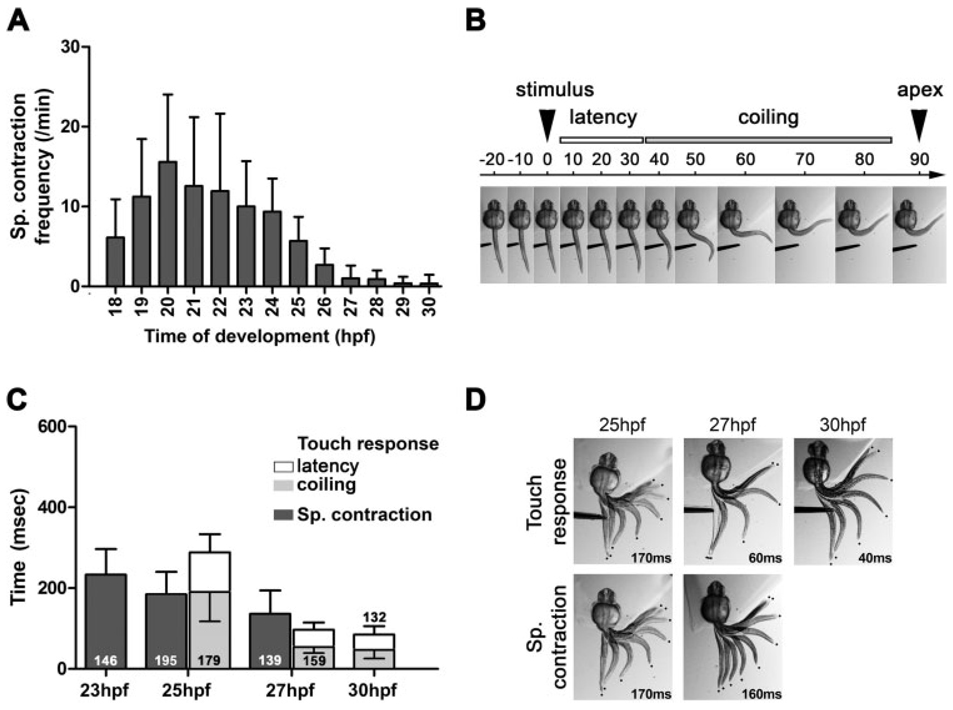Figure 2.
Spontaneous and evoked coiling show kinetic differences. (A) Frequency of the spontaneous coils is represented between 17 and 30 hpf as SC/min. Over 70 freely moving embryos were recorded for each developmental time point. (B) Example of touch response analysis of a 27 hpf embryo. The latency phase is defined as the time when the sensory stimulus contacted the embryo (t = 0 ms) to the frame preceding active coil (t = 30). The coiling is defined by the frame of active coil (t = 40) to the frame at which the tip of the tail reached the apex of its movement (t = 80) (error bars = s.d.). (C) Kinetic analysis of the spontaneous coiling and touch response at 23, 25, 27, and 30 hpf, expressed as time taken in milliseconds (ms). Latency (open bars) and coiling (shaded bars) are indicated for the touch response. Stacked bars are cumulative, thus also representing the duration for the entire behavior. The number of individual movements analyzed is indicated in each column. A minimum of 21 embryos was analyzed for each behavior and time point (error bars = s.d.). (D) Examples of the coiling phase of spontaneous coil and touch response behaviors as depicted by overlaying successive frames from a high-speed video recording. The total duration of each coil is reported in milliseconds (ms). Note that while the duration of the coiling may vary between spontaneous and touch-evoked behavior, the shape of the movement is almost identical. Coiling appears to be the result of contraction of the muscles localized immediately caudal to the yolk sack, while the caudal aspect of the trunk remains completely relaxed. The interframe interval for each overlay is 20 ms (touch response and sp. coil at 25 hpf and sp. coil at 27 hpf); 10 ms (touch response at 27 hpf); and 5 ms (30 hpf).

